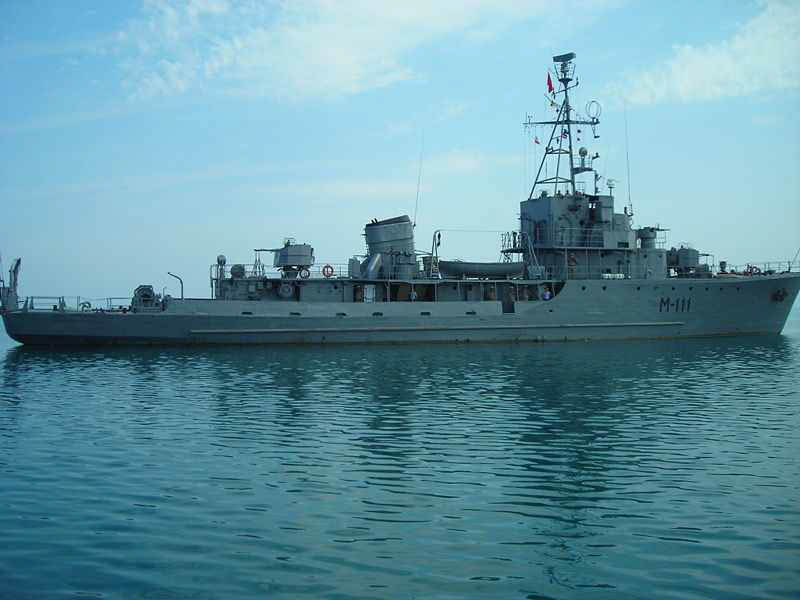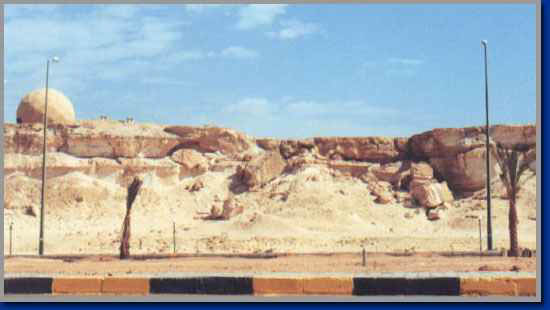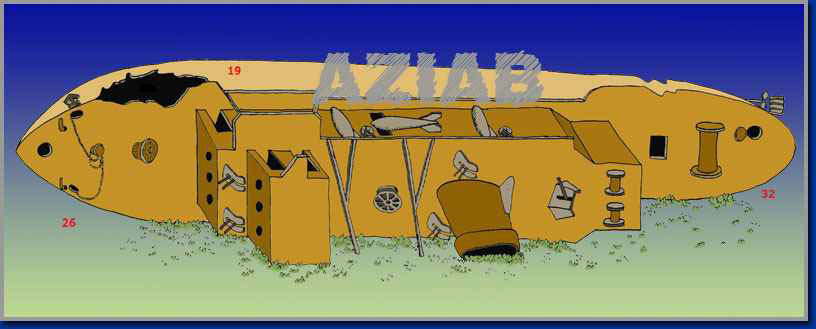In the azure waters of the Northern Red Sea, an enigmatic relic from a bygone era lies silently on the seabed—a Soviet-era T-43 class minesweeper known as the El Minya. Her story is one of international diplomacy, aerial warfare, and the mysteries of underwater exploration.
A Soviet Gem in Egyptian Waters
The EL Minya, also referred to as El Mina, El Minia, El Miniya, or El Miniaya, had its humble beginnings as a product of Soviet shipyards in the late 1940s. The T-43 class minesweeper, originally designed in the UK, found its way to the USSR and was built at shipyards in Leningrad, Kerch, Poland, and even under license in China. Of the 178 ships in this class, Egypt became the recipient of seven, including the EL Minya.
President Nasser’s diplomacy was instrumental in securing these vessels, which arrived on the shores of Egypt in the spring of 1956 as part of a $120 million arms treaty. Curiously, the T-43 class minesweeper’s origins traced back to the UK, showcasing the complexities of the global arms trade.
A Naval Tribute to Egypt
The four T-43 ocean-going minesweepers delivered in 1956 were named after Egyptian cities—Assiout, Bahaira, Gharbia, and the hometown of President Nasser himself, El Minya. Unfortunately, the El Minya’s fate was sealed in the midst of a turbulent political climate.
A Fateful Day in 1970
On the fateful day of February 6, 1970, the peaceful waters of Hurghada in the Northern Red Sea bore witness to a harrowing aerial attack. Four to six Israeli aircraft, likely Phantom F-4 A or Mirage III jets, approached Hurghada under the shroud of low altitude to evade radar detection. Their mission: to neutralize a radar station near the airfield. Anchored at the naval base, El Minya unwittingly became a part of this high-stakes drama.
El Minya’s anti-aircraft guns posed a threat to the low-flying Israeli aircraft and made her a prestigious target. During the attack, a small bomb struck the starboard side of the minesweeper, causing it to roll over. The ship, though still afloat (some accounts suggest it sank and resurfaced), was subjected to another round of attacks by the Israeli aircraft, with machine gun fire targeting the underside of the hull. Ultimately, the El Minya succumbed to the depths of the Red Sea, leaving an anchor chain on the seabed as a haunting reminder of her tragic end.
The Political Backdrop
The events leading to the El Minya’s demise were shaped by the political turmoil of the era. In the early 1970s, Egypt and Israel were embroiled in tensions stemming from Egypt’s desire to regain the Sinai Peninsula, lost during the Six-Day War of 1967. These hostilities culminated in the Yom Kippur War of 1973.
Exploring the Wreck
Today, the sunken El Minya serves as a compelling underwater site for divers seeking to explore history beneath the waves. Divers often begin their journey at the stern of the wreck, where the ship lays on its port side, leaning against the superstructure. This vantage point offers a view of the ship’s two propeller screws and rudders, leading to the south side over the stern deck. Here, massive rolls of cable used for towing torpedo-like mine sweeping devices are still visible.
As divers progress towards the superstructure, they encounter remnants of the ship’s anti-aircraft guns and machine guns. The mast, torn off during the ship’s descent, can now be found to the north of the wreck.
The bow area presents a treasure trove of historical artifacts, including the mount for the second anti-aircraft gun. Nearby, the port side anchor chain traces the path that El Minya took during her desperate attempt to evade the Israeli attack. The starboard anchor remains in place, adjacent to the blast hole where the bomb struck, providing an intriguing swim-through opportunity.
Divers should exercise caution due to sharp edges and objects scattered across the seabed. The wreck also retains some live ammunition, a stark reminder of its wartime past. With a torch, divers can illuminate the interior, revealing the vivid colors of marine life that have found refuge within the ship’s hull.
A Dive for the Experienced
Exploring the El Minya is not without its challenges. The dive site, located east of Hurghada Naval Base, features depths reaching a maximum of 32 meters at the stern, 26 meters at the bow, and 19 meters around the blast hole atop the wreck. The site occasionally experiences poor visibility and strong currents, making it best suited for experienced divers. Care must be taken to avoid sharp edges, and divers should remain vigilant, as boats frequently visit the site.
Despite these challenges, the El Minya offers a unique opportunity to dive into history, explore a sunken relic of conflict, and witness the resilience of marine life in the depths of the Red Sea. It stands as a testament to the enduring legacy of a bygone era, forever preserved beneath the waves.







